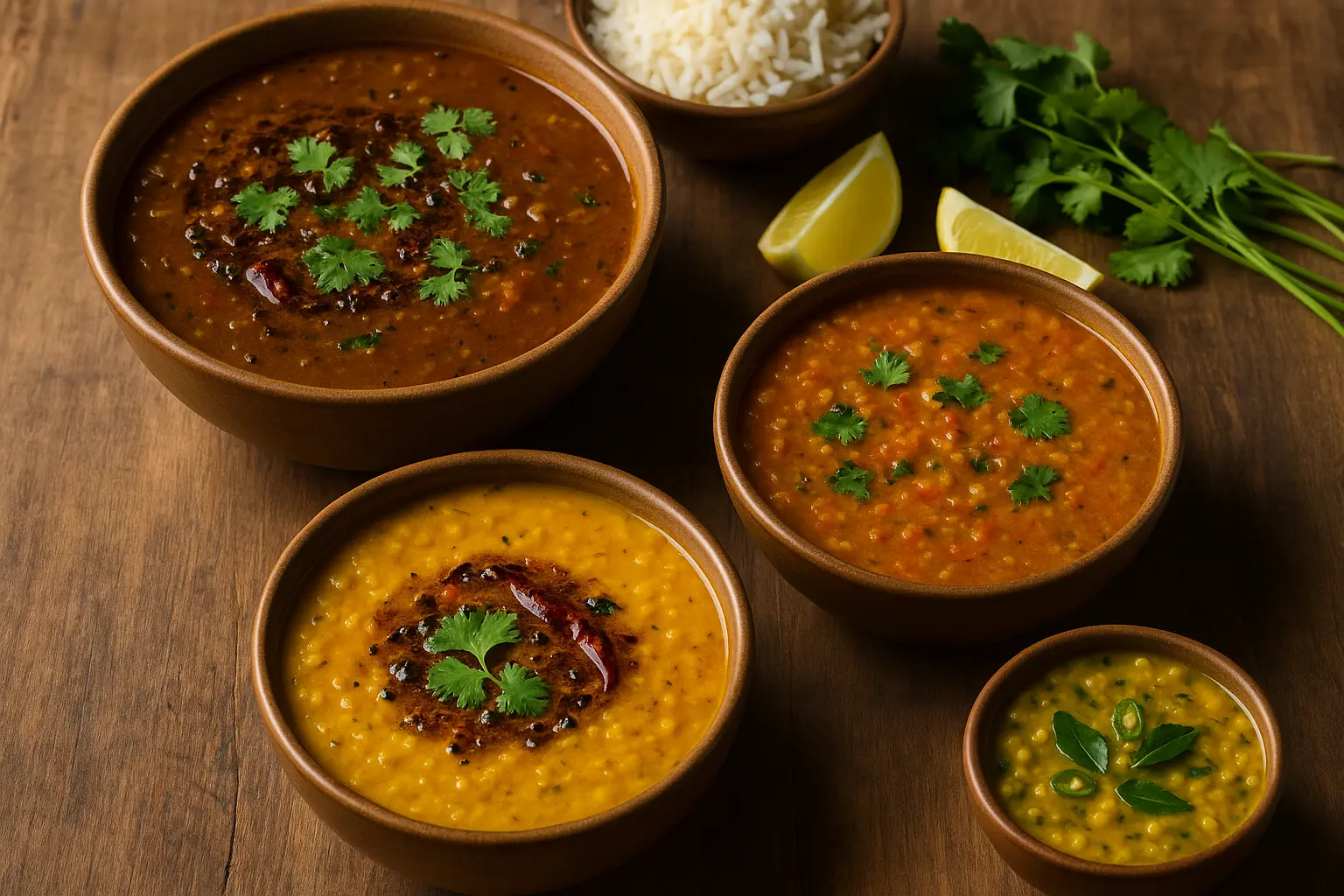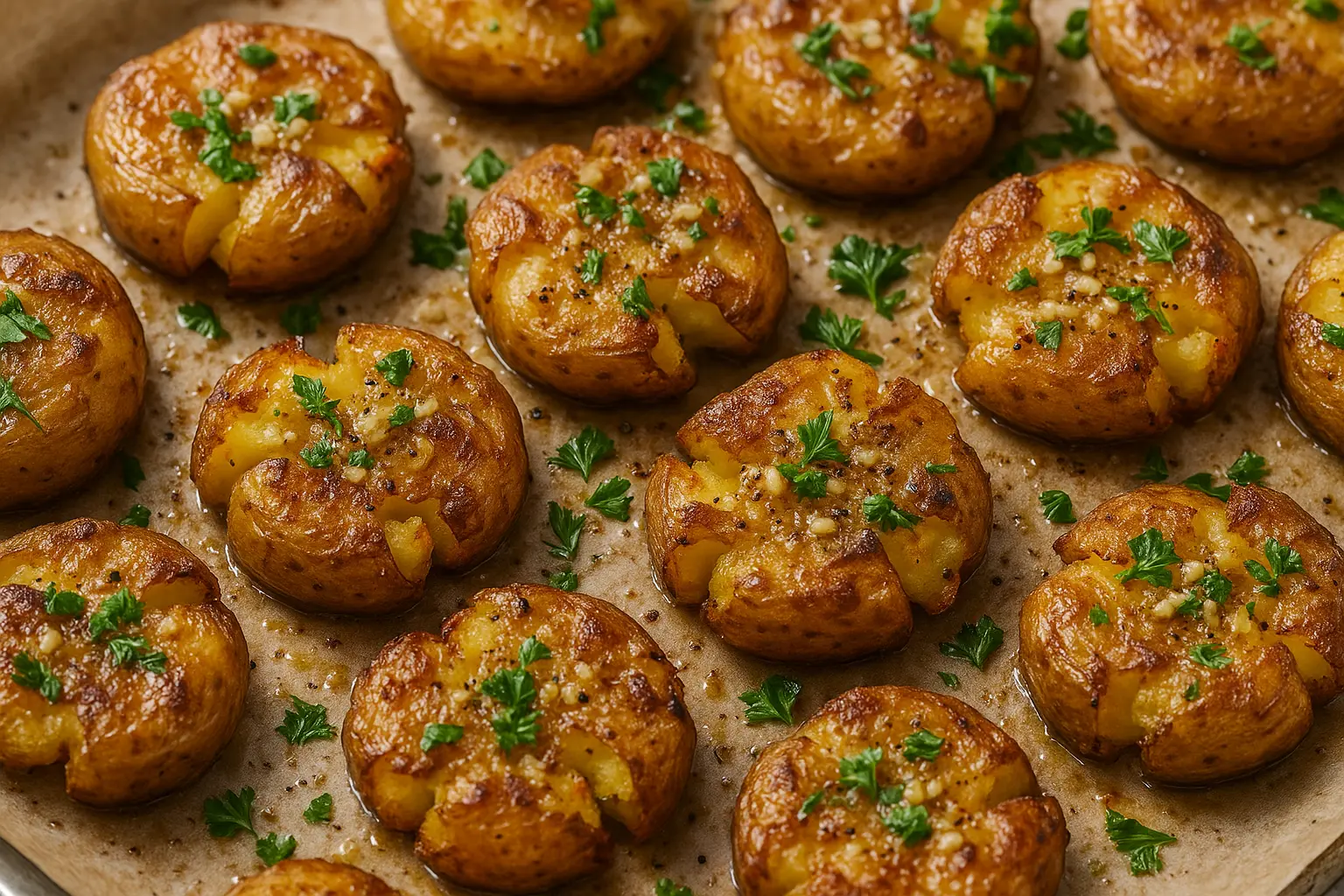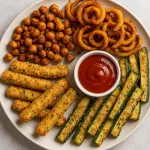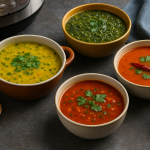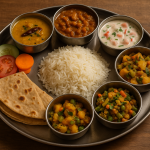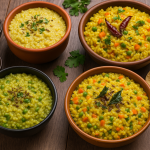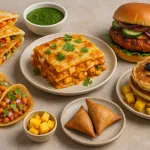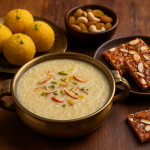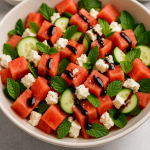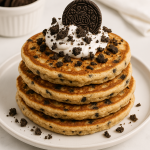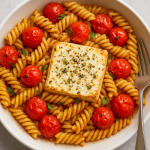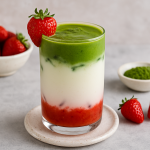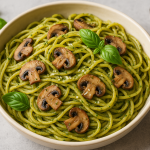If there’s one dish that unites India across states, traditions, and family tables, it is dal. This humble yet versatile lentil preparation is more than just food—it’s an emotion. For many Indians, dal is the taste of home: steaming hot, poured over rice, paired with roti, or eaten as a soul-soothing bowl on its own.
Dal isn’t one recipe—it’s a universe of flavors, textures, and moods. From the light, healing moong dal given during recovery to the spicy, tangy sambar of South India, dal transforms itself according to season, region, and need. Whether you’re feeling under the weather, craving indulgence, or simply looking for a quick weekday meal, there’s always a dal variation waiting to comfort you.
In this guide, we’ll dive deep into different Indian dal varieties, explore regional styles, share recipe variations for every mood, and offer tips on cooking dals perfectly every single time.
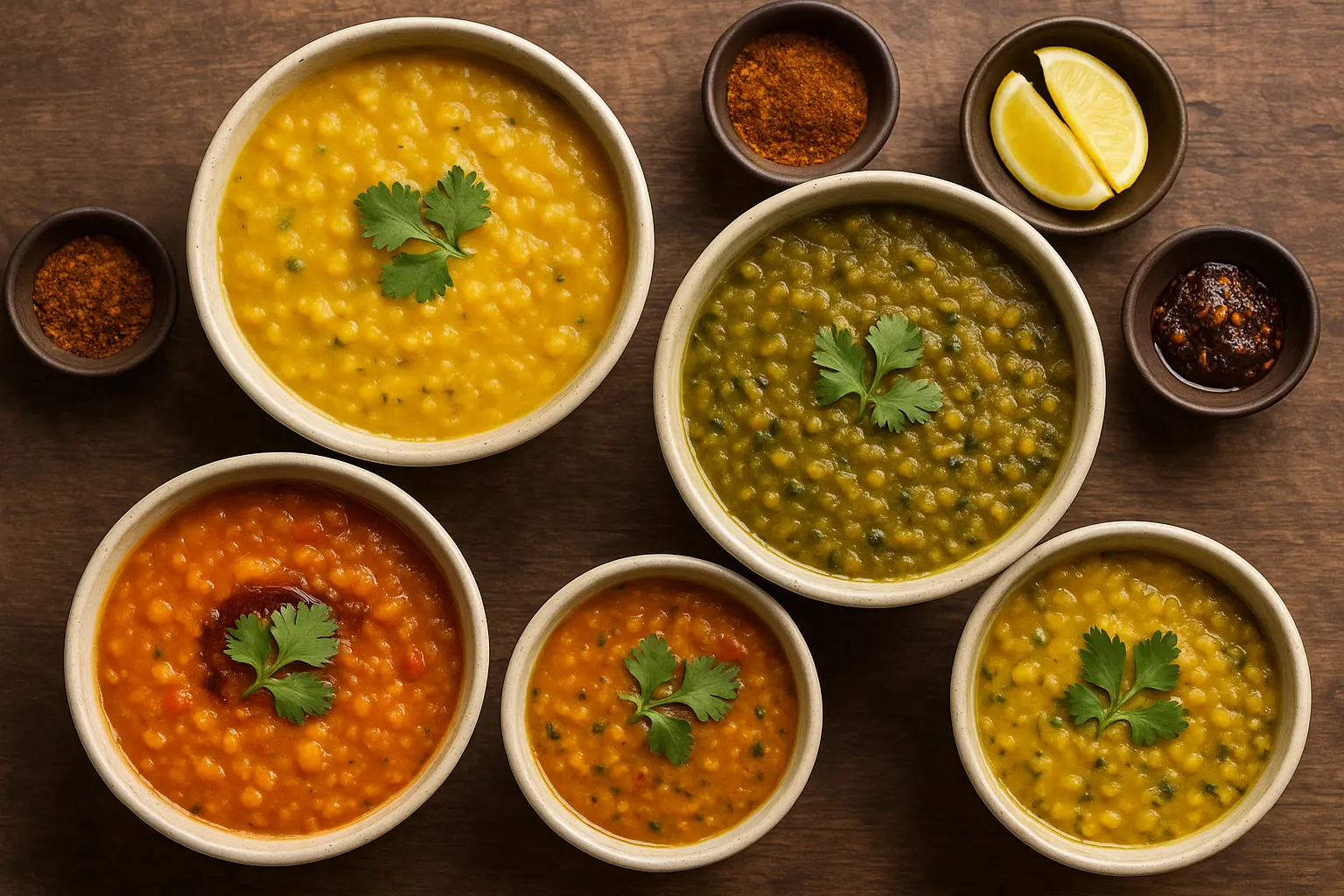
Understanding Dal: More Than Just Lentils
The word “dal” refers to both split pulses (lentils, peas, beans) and the dish prepared from them. India has dozens of dal varieties, each with a unique texture, flavor, and nutritional profile. Some popular ones include:
- Toor Dal (Pigeon Pea): Nutty, slightly sweet, used in sambar, dal fry, and Gujarati dal.
- Moong Dal (Yellow/Green Gram): Light, easily digestible, ideal for khichdi and soups.
- Masoor Dal (Red Lentils): Quick-cooking, mildly earthy, great for everyday curries.
- Chana Dal (Split Bengal Gram): Rich and nutty, common in North Indian dals and South Indian snacks.
- Urad Dal (Black Gram): Creamy, often used in dal makhani or South Indian dosas and idlis.
- Rajma (Kidney Beans) & Kabuli Chana (Chickpeas): Though technically beans, they are part of the wider dal family.
The beauty of dal lies in its adaptability—simple tempering can make it mild, tangy, or fiery.
Comforting Dal Variations for Every Mood
Let’s explore dal varieties through moods—because sometimes what you need from your plate is not just nutrition, but emotional comfort.
1. When You’re Feeling Under the Weather: Light & Healing Dals
Moong Dal Khichdi
- A gentle blend of yellow moong dal and rice, seasoned with turmeric and a light tempering of ghee, cumin, and asafoetida.
- Easy to digest, soothing for the stomach, and comforting for colds, flu, or recovery.
- Often served with papad or a dollop of ghee for added warmth.
Simple Moong Dal Soup
- Cook moong dal with ginger, garlic, and pepper.
- Strain to make a light broth, perfect for sore throats.
Green Moong Sprout Dal
- Nutritious and protein-rich, yet light.
- Ideal if you want comfort without heaviness.
2. When You’re Craving Something Spicy & Bold
Dal Tadka (North Indian Style)
- Made with toor dal or a mix of dals.
- Topped with a sizzling tadka of ghee, garlic, onion, green chili, and red chili powder.
- A classic that pairs beautifully with rice or naan.
Kolhapuri Spicy Dal
- Fiery Maharashtrian preparation with ground coconut, sesame, and red chilies.
- Perfect for those who love bold flavors.
Andhra Pappu with Gongura (Sorrel Leaves)
- Tangy and spicy, cooked with gongura greens.
- Served with hot rice and a dollop of ghee.
3. When You Want Something Tangy & Refreshing
Gujarati Dal
- Toor dal simmered with jaggery, kokum/tamarind, curry leaves, and spices.
- Sweet-sour balance makes it refreshing.
- Traditionally eaten with steamed rice and papad.
South Indian Sambar
- Toor dal with tamarind, sambar powder, curry leaves, and vegetables.
- Tangy, spicy, and hearty.
- A staple in Tamil and Karnataka cuisine, paired with rice or idli/dosa.
Tomato Rasam with Dal
- A thin, spiced broth made with toor dal stock, tamarind, pepper, and garlic.
- Light yet invigorating.
4. When You’re in the Mood for Creamy Indulgence
Dal Makhani (Punjabi Style)
- Black urad dal and rajma slow-cooked with butter, cream, and spices.
- Luxurious and indulgent, often paired with naan or jeera rice.
Shahi Chana Dal
- Chana dal cooked with onions, tomatoes, and finished with cream or coconut milk.
- A festive dal, richer than everyday versions.
Palak Dal (Dal with Spinach)
- Creamy, wholesome, and packed with greens.
- Works well with both moong and toor dal.
5. When You Need a Quick Weeknight Meal
Masoor Dal Curry
- Red lentils cook in under 20 minutes.
- Add onion, tomato, garlic, and a simple tadka for a quick, flavorful dish.
Instant Pot Mixed Dal
- Combine moong, masoor, and toor dal in a pressure cooker.
- Minimal prep, ready in 15–20 minutes.
One-Pot Dal with Vegetables
- Add seasonal vegetables like carrot, beans, or zucchini to dal.
- Turns into a wholesome one-dish meal.
6. When You Want to Impress Guests
Panchmel Dal (Rajasthan)
- Blend of five dals: toor, moong, chana, masoor, and urad.
- Richly spiced, royal in flavor.
- Traditionally paired with bati in Rajasthan.
Dal Bukhara
- Similar to dal makhani, but simmered overnight for deep flavors.
- Signature of ITC Maurya’s Bukhara restaurant.
Khatta Meetha Dal (Festive Style)
- Toor dal with jaggery, tamarind, and spices.
- Served in weddings and festive spreads.
7. When You’re Feeling Adventurous: Regional Gems
- Bengali Cholar Dal: Chana dal with coconut, raisins, and whole garam masala.
- Maharashtrian Amti: Toor dal with goda masala and tamarind.
- Kashmiri Rajma Dal: Kidney beans slow-cooked with fennel and dry ginger powder.
- Kerala Parippu Curry: Moong dal with coconut and curry leaves, eaten with rice and ghee.
Cooking Tips for the Perfect Dal
- Soaking: Speeds up cooking, improves texture.
- Consistency: Adjust water—thicker for rotis, thinner for rice.
- Tadka: Always add at the end for maximum flavor impact.
- Spices: Vary according to region—asafoetida in North, curry leaves in South.
- Storage: Dals taste even better the next day as flavors deepen.
Nutritional Value of Dal
Dal is not only comforting but also highly nutritious:
- Protein-rich: Ideal for vegetarians and vegans.
- Fiber-packed: Aids digestion and satiety.
- Low fat, high micronutrients: Iron, potassium, folate.
- Versatile diets: Gluten-free, vegan, diabetic-friendly.
Dal Beyond Rice: Creative Pairings
- With Quinoa or Millets: Healthier alternative to rice.
- Dal Soup or Stew: Thick dal can double up as a soup.
- Dal Pancakes (Cheela): Leftover dal transformed into savory pancakes.
- Stuffed Paratha with Dal: Use thick dal as stuffing.
Conclusion: A Bowl for Every Mood
Dal is more than food—it’s a memory, a tradition, and a mood enhancer. Whether you’re seeking comfort in a bowl of khichdi, celebrating with dal makhani, or exploring regional flavors, Indian dal is endlessly adaptable.
Next time you’re wondering what to cook, let your mood decide—and there will always be a dal recipe to match it.
Leave a comment
Your email address will not be published. Required fields are marked *


